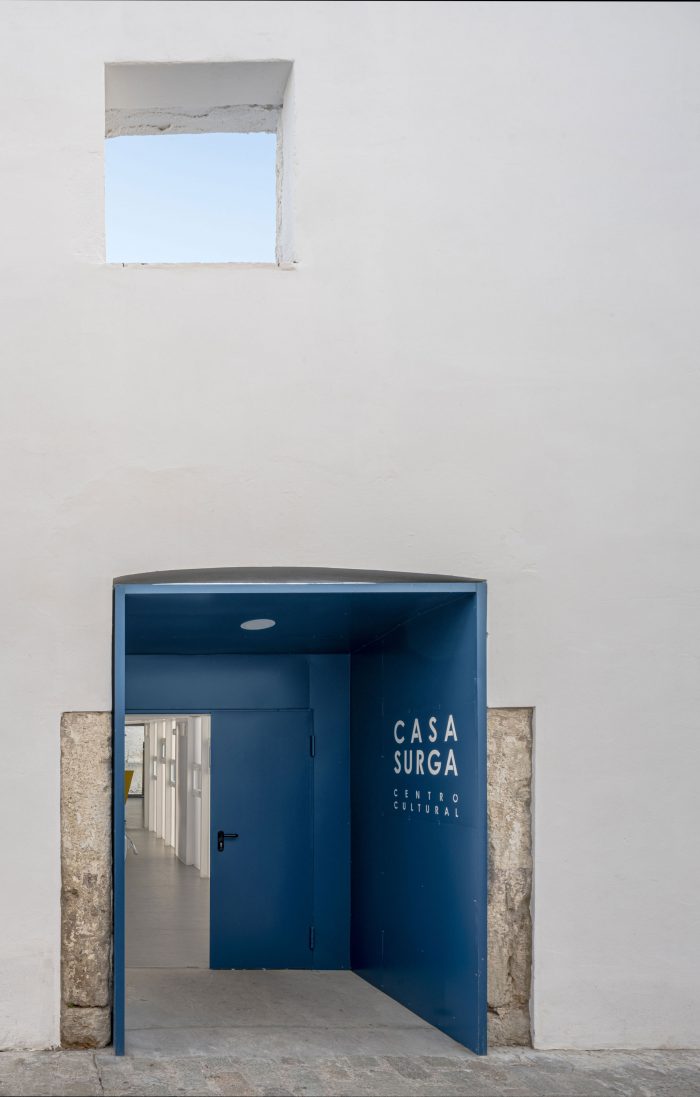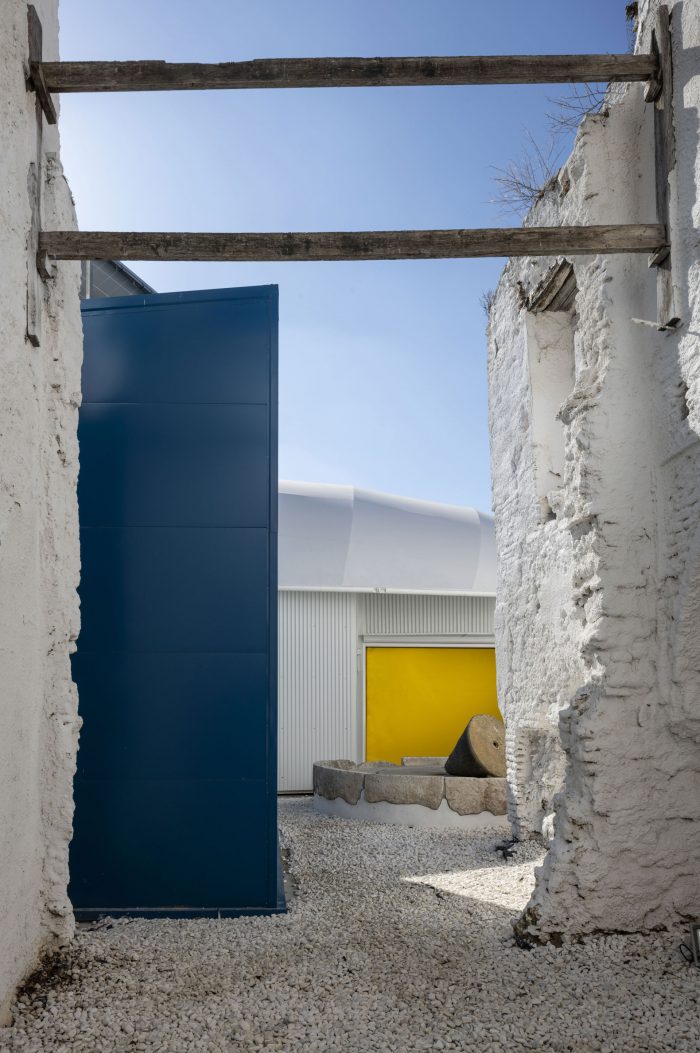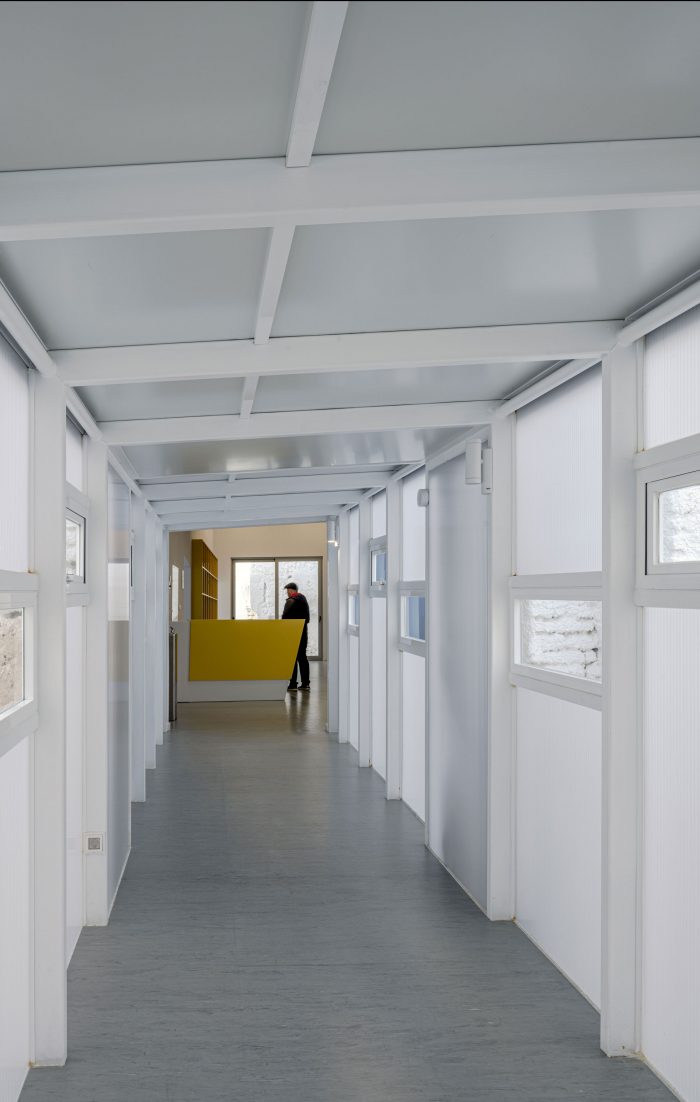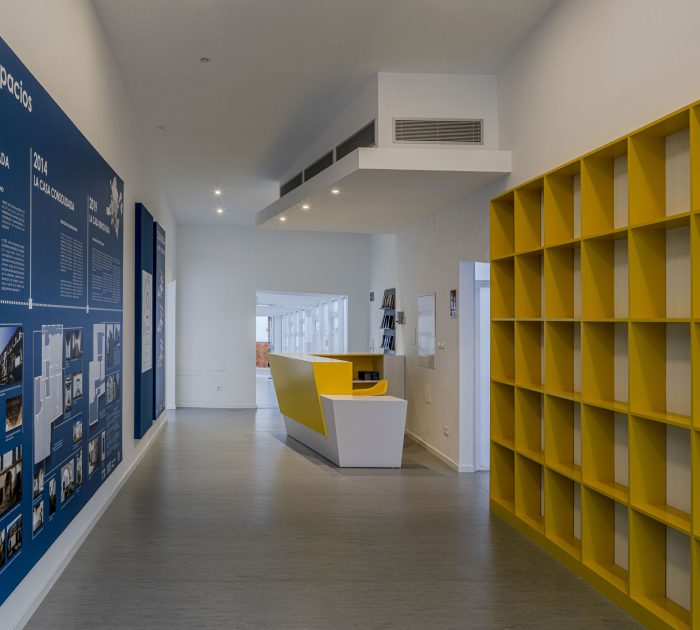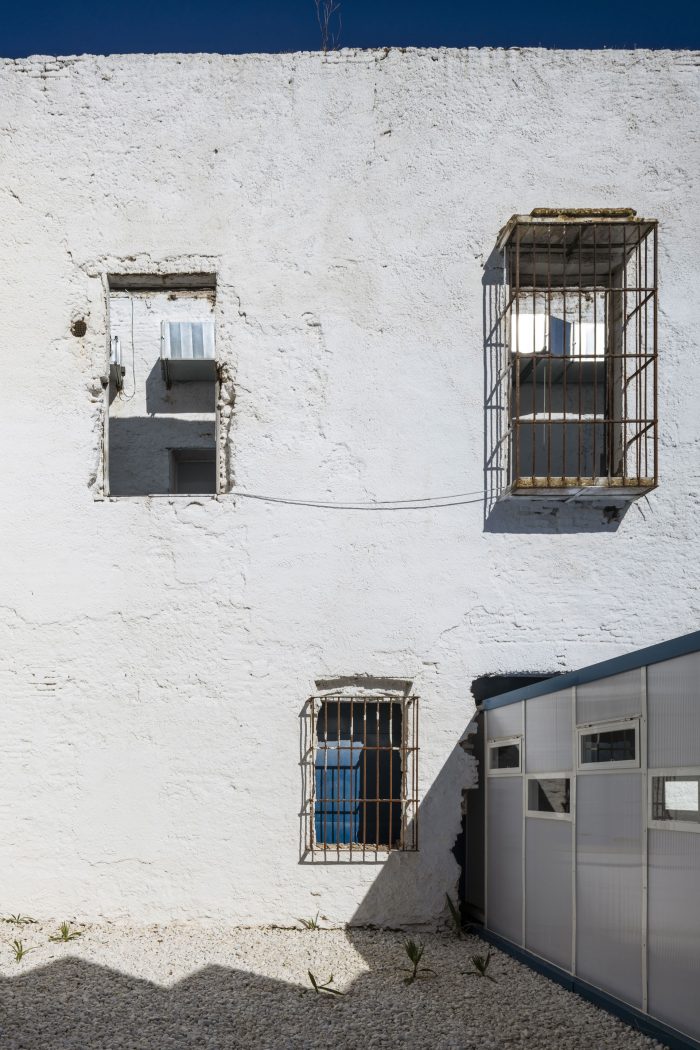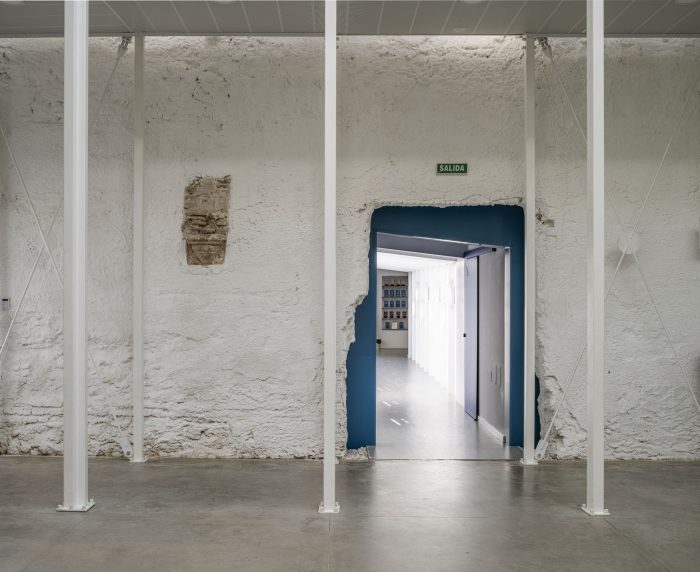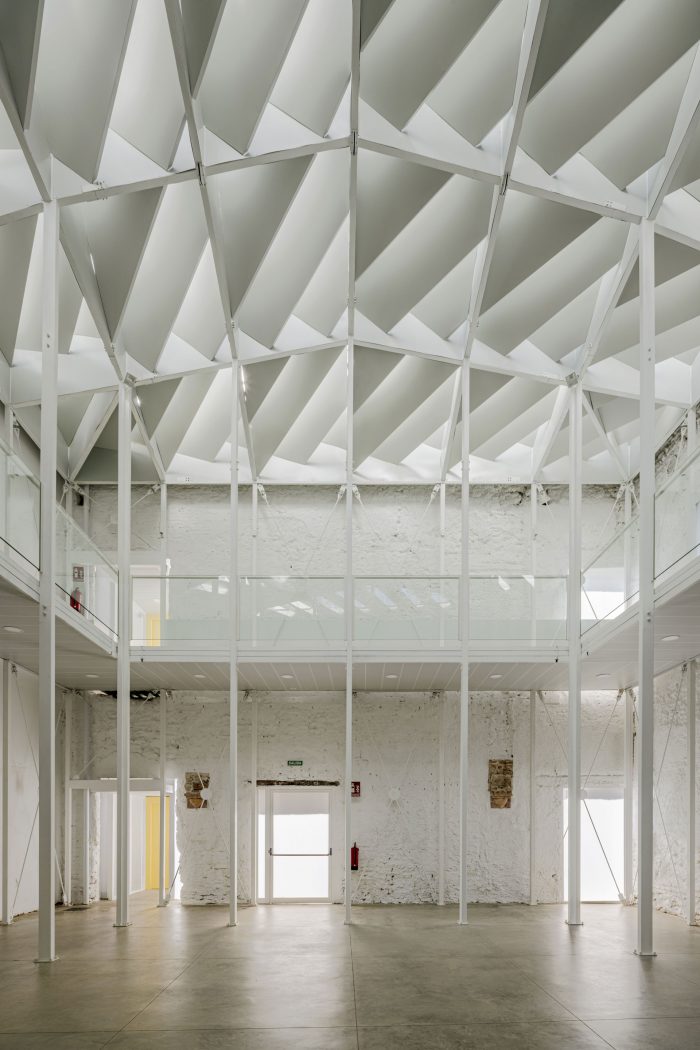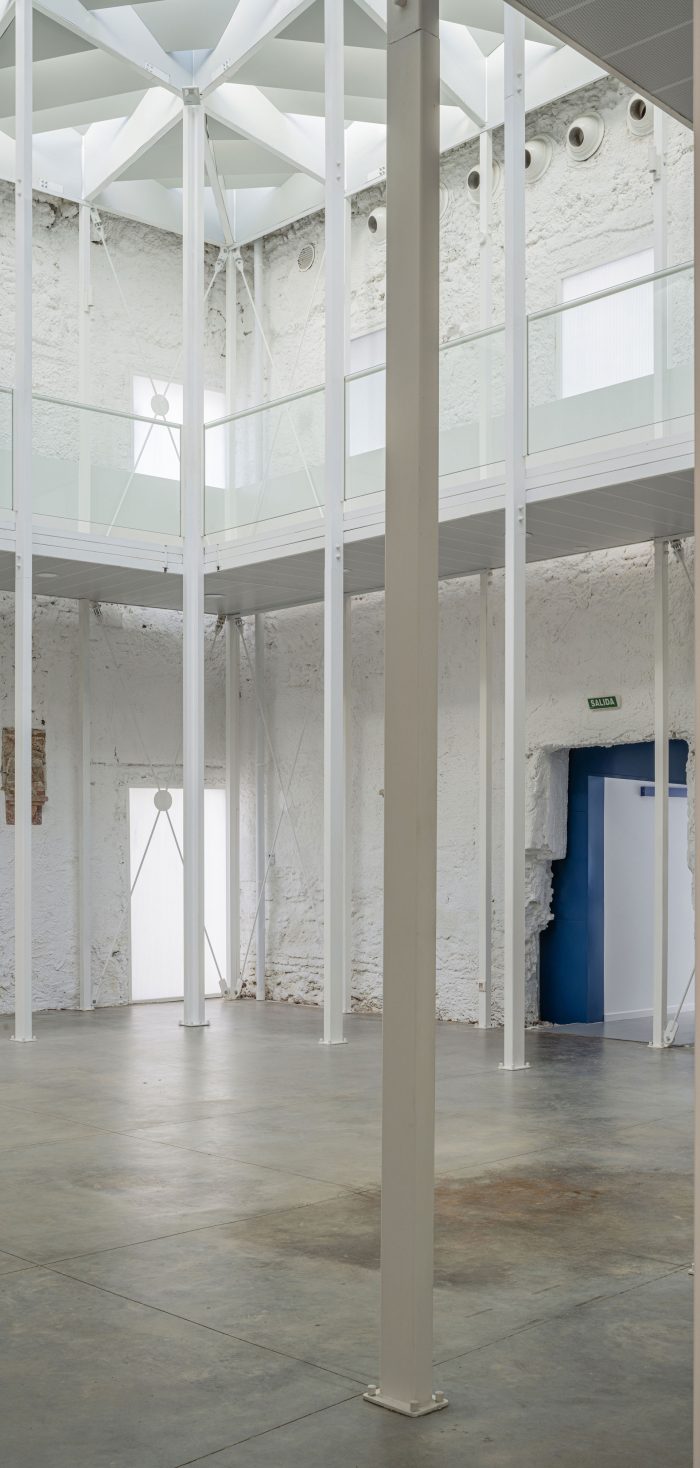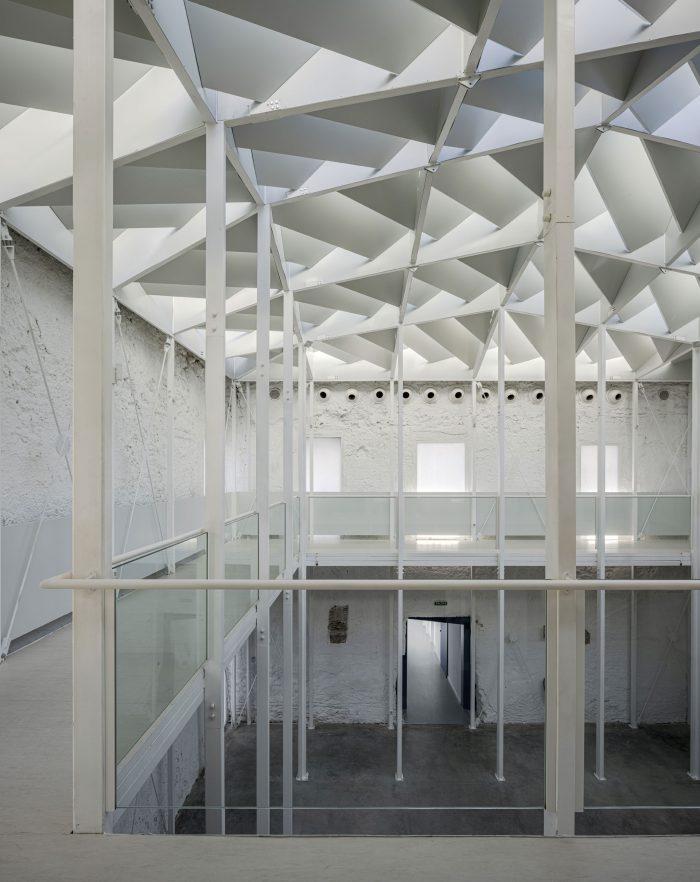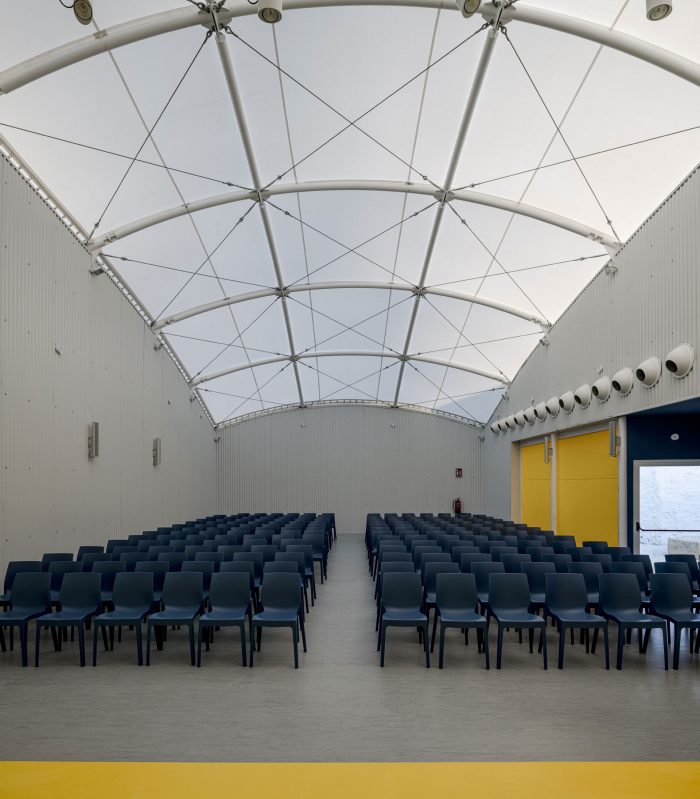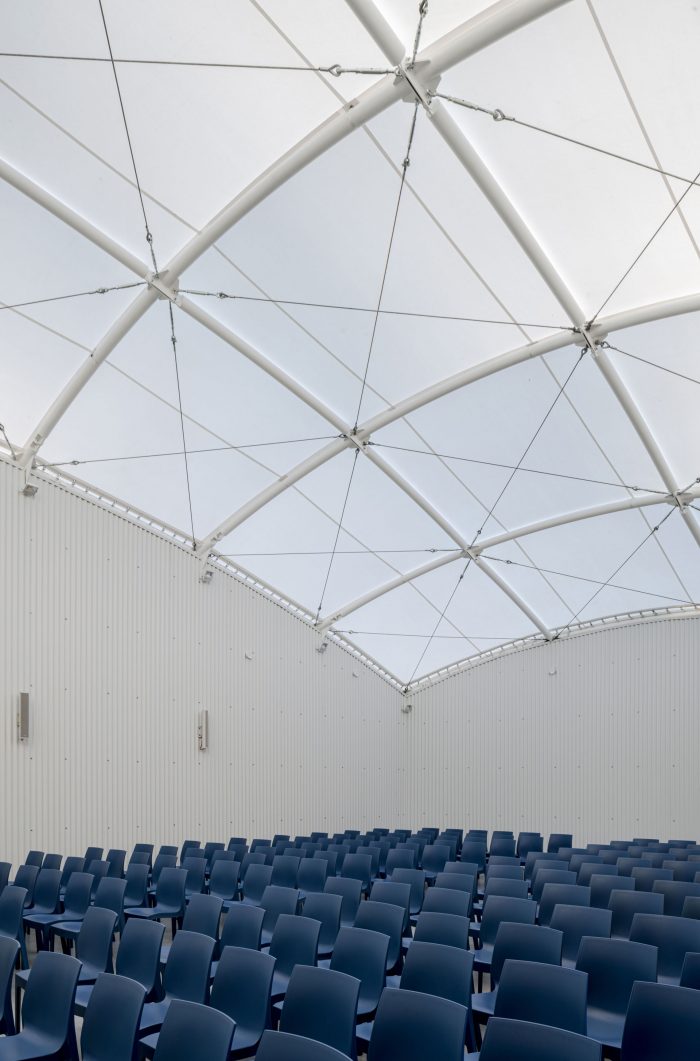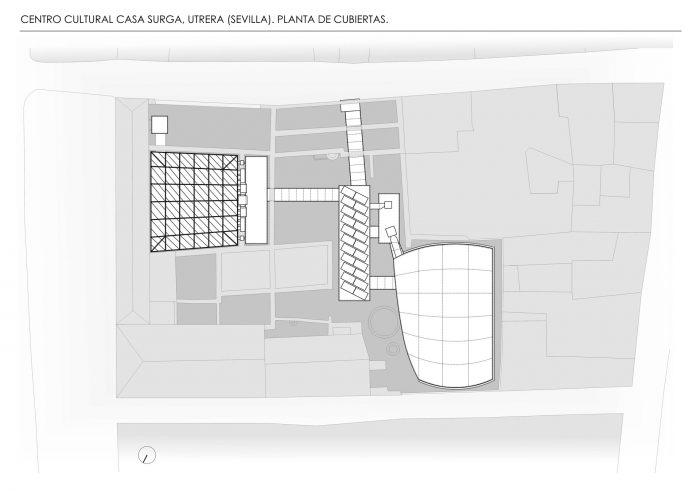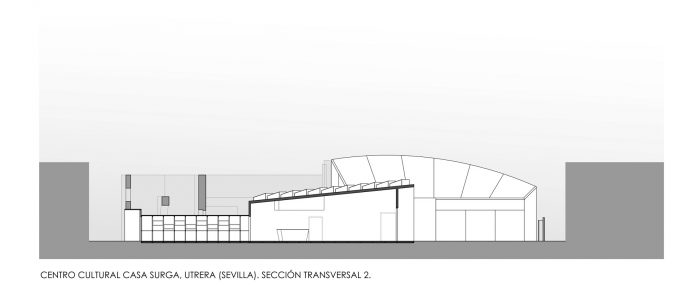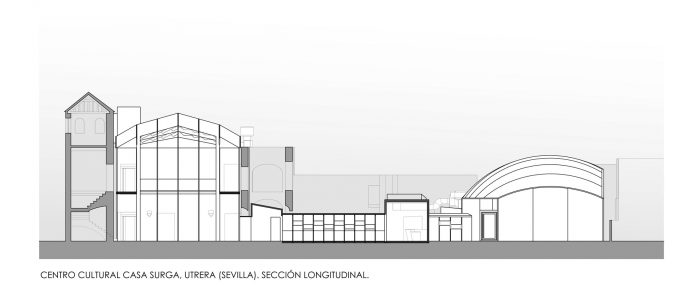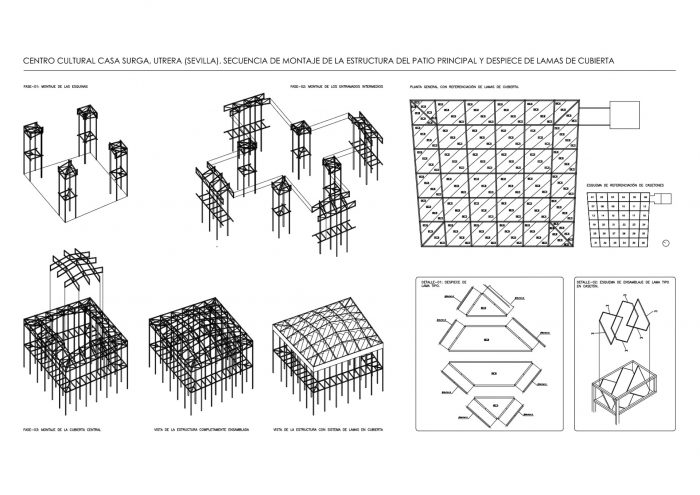该项目将一座1778年的房屋宫殿改造成21世纪的文化中心,其内容广泛,包括展览厅和礼堂。从一开始,这个先前的存在就被理解为一个实际的城市空间,随着时间的推移经历了各种变化。因此,它是基于物质性和空间的混合物,已经与其自身的类型学和城市的其他部分解构。
这样一来,物质和空间的先在性被用一种新的解读,基于与古建筑的围墙有关,这是房子的高贵区域,也是保存较好的空间。主庭院被恢复,其余的自由空间,远离主建筑,已经利用一个更开放的解释,以引入必要的作品,完成该计划。
This project transforms a 1778 house-palace into a Cultural Center of the 21st century with an extensive program that includes exhibition halls and an auditorium. From the beginning, this pre-existence was understood as a practically urban space that has undergone transformations of all kinds over time. Thus, it was based on a mixture of materiality and space already decontextualized both with its own typology and with the rest of the city.
In this way, material and spatial preexistence was used with a new reading based on relating to the ancient building of the enclosure which was the noble area of the house and better preserved space. The main courtyard is recovered, and the rest of the free spaces, away from the main building, have been exploited with a more open interpretation in order to introduce the necessary pieces that complete the program.
记忆作为一个新的干预措施的支持,虽然它提供了一个新的程序,允许它被解释和投入价值,增加了一层(基底)的历史的宫殿房子。
从功能上讲,主入口由一条侧街(c/Ramón y Cajal)进行,以释放纪念性的立面,避免失去古建筑中的展览空间,并能够处理计划中的其余房间的初始空间,以接待游客。这个空间提供了关于房子的历史和演变以及在文化中心举办的不同活动的信息。从这个围墙中,通过与房子的遗留空间保持视线接触的通透长廊,游客可以进入其余的附属空间(展览、礼堂和厕所)。
The reminiscent acts as a support for a new intervention that, although it provides a new program, allows it to be interpreted and put into value, adding one more layer (substrate) to the history of the palace-house.
Functionally, the main entrance is carried out by a side Street (c/ Ramón y Cajal) to free the monumental façade and avoid losing exhibition space in the ancient building and to be able to dispose of the rest of the planned rooms an initial space for receiving visitors. This space provides information on both the history and evolution of the house and the different events held at the Cultural Center. From this enclosure, through permeable galleries which maintain eye contact with the inherited spaces of the house, visitors can access the rest of the dependencies (exhibition, auditorium and toilets).
从主庭院开始,参观者走向房屋最开放的区域,而干预措施则从类型上远离它,适应自由空间,在那里,实际上,没有先前的物质性可以使用。通过这种方式,专门为观众席设计的体量成为这部分干预措施中最重要的元素。它被设想为一个胶囊,由拱门网络、张力纺织膜覆盖和金属板作为垂直布的包覆构成。通过接待处的画廊进入,然后是一个小大厅,扩大了入口空间。该装置配备了一个更衣室模块,依次与接待处和礼堂相连。考虑到它的容量接近200人,而且它的平台是水平的,因此提出了一个最小的立面方案的划定,其想法是将它几乎作为一个电视机来呈现,在这里,代表和公众是封闭的,并连接在一起的。这个空间的使用体验是通过一个可操作的侧墙来完成的,一旦上传,参观者就可以观察到房子里的油坊遗迹,也可以将围墙作为户外空间使用。在夜间,利用RGB LED射灯投射在白墙上,增强了这一形象。
From the main courtyard, the visitor moves towards the most open area of the house and the intervention typologically moves away from it, adapting to the free space where, effectively, there is no previous materiality which can be used. In this way, the volume dedicated to the auditorium is formed as the most significant element of this part of the intervention. It is conceived as a capsule which is built with a network of arches, a tensioned textile membrane cover and cladding of sheet metal panels as vertical cloths. The access is made through a gallery that comes from reception followed by a small lobby which expands the entrance space. This installation is equipped with a dressing room module connected in turn with both reception and the auditorium. Taking into account that its capacity is close to 200 people and that the platform on which it is available is horizontal, a delimitation for a minimum elevation scenario is proposed with the idea of presenting it almost as a television set, where the representation and the public are closed together and connected. The experience of using this space is completed with an actionable side wall that, once uploaded, allows visitors to observe the remains of the oil mill that was in the house and also the use of the enclosure as an outdoor space. At night, this image is enhanced with the use of RGB LED spotlights which are projected on the whitewashed walls.
整个项目的构思来自于模拟工具的使用和不同物理效果的优化(自然采光、遮阳、最大限度的太阳能收集、自然通风、风效应等),这有助于完成建筑的参观体验。所有被使用的建筑系统都是轻巧、快速组装和可逆的。被动式策略已被引入到调节设计中,并包含了足够数量的光伏板,使该建筑实际上是自给自足的。因此,它被认为是最方便和最可持续的解决方案(取决于生命周期的最小化),以干预保护环境。
The whole project has been conceived from the use of simulation tools and optimization of the different physical effects (natural lighting, shading, maximum solar collection, natural ventilation, wind effect, etc.) which contribute to complete the visit experience of the building. All the construction systems that have been used are light, quick assembly and reversible. Passive strategies have been introduced in the design of the conditioning and enough number of photovoltaic panels have been included to make the building practically self-sufficient. It is thus considered as the most convenient and sustainable solution (depending on the minimization of the Life Cycle) to intervene in a protected environment.
建筑师: ZAV建筑事务所
年份:2019年
摄影:Soroush Majidi JESÚS GRANADA
城市:UTRERA
国家:西班牙
Architects: ZAV Architects
Year: 2019
Photographs: JESÚS GRANADA
City:UTRERA
Country:SPAIN



